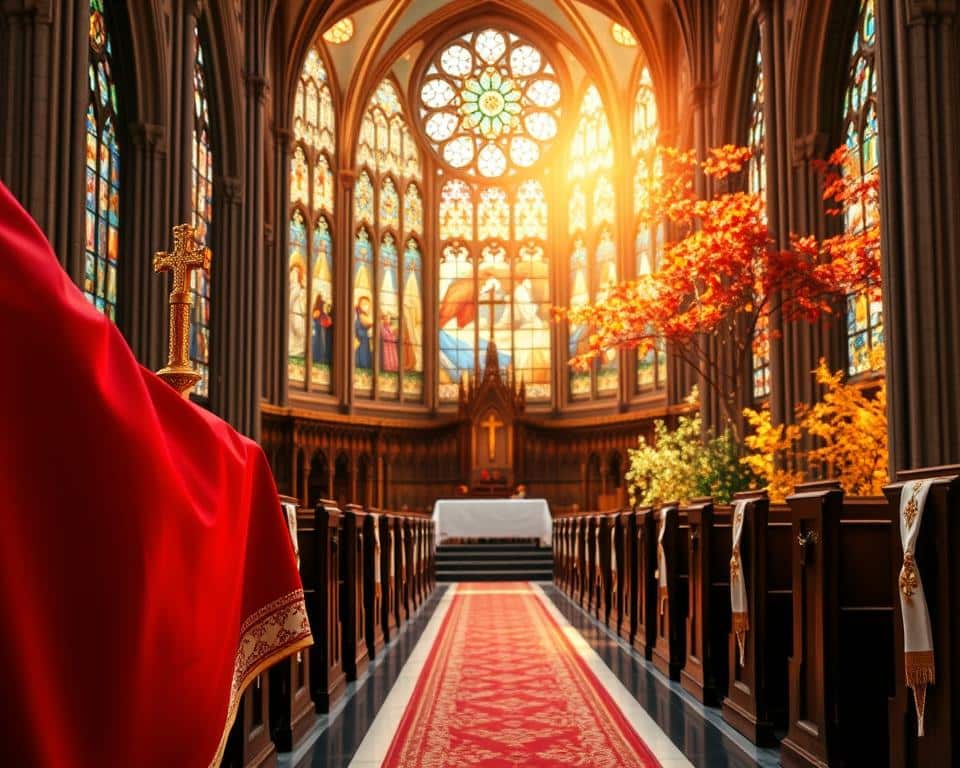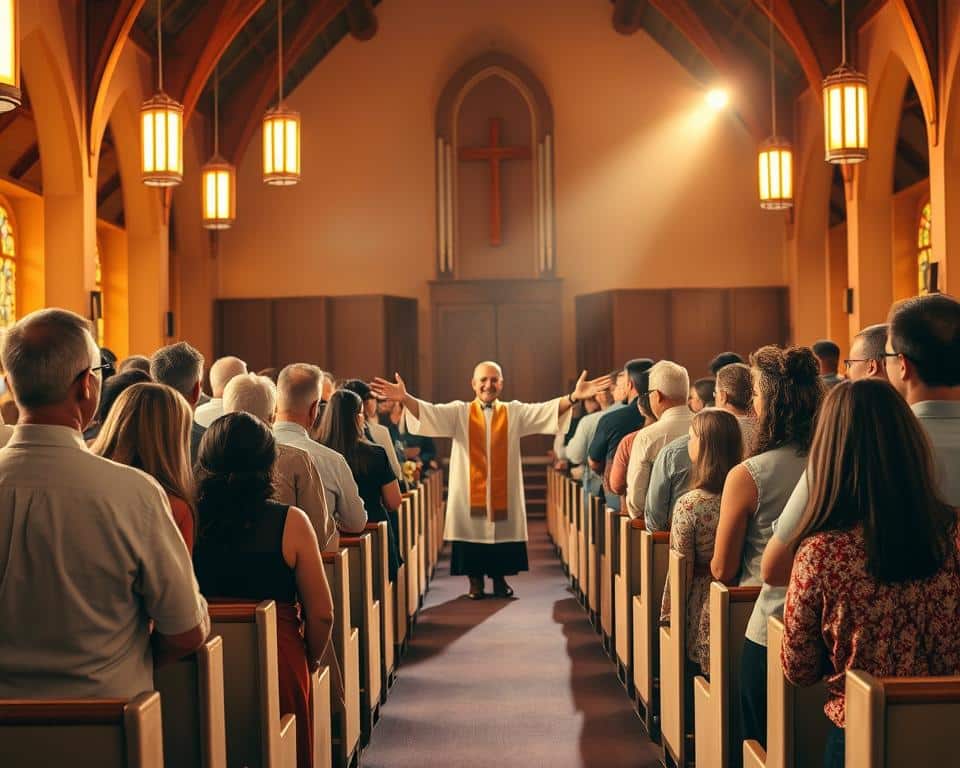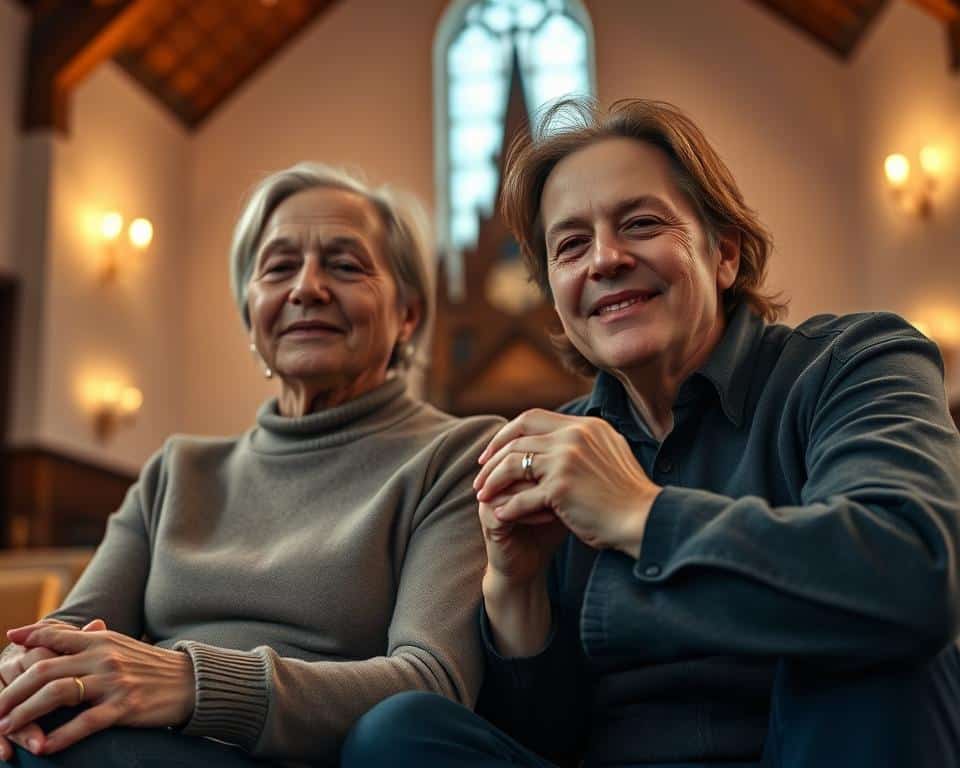Do you want to deepen your faith while honoring special days with loved ones? The liturgical calendar offers a meaningful way to connect with God’s word throughout the year. Whether it’s Advent, Easter, or other key moments, these times remind us of His love and grace.
Understanding the church seasons helps families grow closer to Scripture. Fixed dates like Christmas and movable feasts like Easter create a rhythm of worship. This guide will show you how to celebrate with purpose, unity, and joy.
From studying the Bible to sharing traditions, every day can strengthen your walk with Christ. Let’s explore how to make these moments count—together.
Understanding Christian Celebrations
Have you ever wondered how the church year guides worship through sacred seasons? The liturgical calendar organizes these moments, blending Scripture with tradition. Each season reflects God’s truth in a unique way.

The Liturgical Calendar and Its Seasons
Western traditions follow six key periods:
- Advent: Purple symbolizes preparation for Christ’s coming.
- Christmas: White celebrates Jesus’ birth (fixed on December 25).
- Lent: Purple represents repentance and renewal.
- Paschal Triduum: Deep red marks Christ’s sacrifice.
- Easter: White proclaims resurrection joy.
- Ordinary Time: Green signifies growth in faith.
“The colors remind us of God’s promises—each hue tells a story.”
Fixed and Movable Dates
The Gregorian calendar sets some dates, like Christmas, while others shift. Easter’s date depends on the moon—it’s the first Sunday after the first full moon following March 21. This affects Pentecost and Ash Wednesday too.
Eastern traditions start their church year on September 1, but both calendars point to the same hope. Fixed dates like Epiphany (January 6) and All Saints’ Day (November 1) anchor the journey.
Advent: Preparing for Christmas
The quiet anticipation of Advent invites us to reflect on God’s faithfulness. This season begins on the first Sunday four weeks before Christmas Day, weaving hope into each candle lit and Scripture read.

Marking the Days
Advent starts between November 30 and December 3, depending on the year. Families often use a countdown calendar or light an Advent wreath—one candle each Sunday. The four candles symbolize hope, peace, joy, and love.
“The wreath’s circle reminds us of God’s unending promise—light grows as we near Christ’s birth.”
Traditions That Teach
Many create a Jesse Tree, tracing Messianic prophecies through daily ornaments. Others fast or pray together, mirroring the waiting in Scripture. Eastern traditions observe a longer fast, starting earlier in November.
These days are more than a countdown. They’re a chance to pause, pray, and prepare our hearts for the birth Jesus. Whether through devotions or acts of kindness, Advent turns waiting into worship.
Christmas and Its Observances
What makes Christmas more than just a holiday? The answer lies in its deep connection to the birth Jesus. Across denominations, believers honor this sacred time with traditions that reflect God’s love and the Magi’s devotion.
Christmas Day and Christmas Eve Traditions
Western churches celebrate Christmas Day on December 25, marked by candlelight services and caroling. Families read Luke 2:1–20, retelling the nativity story. Gift-giving mirrors the Magi’s offerings, symbolizing Christ’s kingship.
In Latin America, Las Posadas (December 16–24) reenacts Mary and Joseph’s journey. Processions end with Scripture readings and festive meals, blending faith with community.
Differences in Eastern and Western Practices
While Western Advent focuses on anticipation, Eastern Christian churches observe a 40-day Nativity Fast. Meals are simple, emphasizing prayer. Their Christmas Day falls on January 7 (Gregorian calendar), aligning with the older Julian calendar.
“The Incarnation reminds us that God became flesh—our celebrations should reflect that awe.”
Both traditions share core truths: the joy of Christ’s arrival and the call to worship. Whether through fasting or feasting, the birth Jesus remains central.
Lent and Ash Wednesday
The solemnity of Ash Wednesday opens a sacred journey toward Easter. This day marks beginning of Lent, a 40-day season (excluding Sundays) of prayer, fasting, and repentance. Ashes traced on foreheads whisper Genesis 3:19: “For dust you are, and to dust you shall return.”
The Meaning of Ash Wednesday
Churches worldwide hold services where believers receive ashes in the shape of a cross. This ritual echoes Jesus’ call to “repent and believe” (Mark 1:15). The ashes—often from burned palm branches—symbolize humility and mortality.
Traditional fasting includes abstaining from meat, but families might also reduce screen time or serve simpler meals. These acts foster prayer Christian unity, turning hearts toward God’s promises.
How Lent Leads to Easter
Lent mirrors Jesus’ 40 days in the wilderness (Matthew 4:1–11). It’s a time to deepen faith through Scripture study and sacrifice. Each Sunday, the fast pauses to celebrate resurrection hope.
Holy Week culminates the season:
- Palm Sunday: Commemorates Jesus’ triumphal entry.
- Maundy Thursday: Honors the Last Supper.
- Good Friday: Reflects on Christ’s sacrifice.
“Lent prepares us to fully embrace Easter’s joy—empty tomb, risen King.”
Holy Week: Palm Sunday to Easter
From palm branches to an empty tomb, Holy Week tells the greatest story ever told. This sacred time walks you through Jesus’ final days—His sacrifice, love, and victory over death. Each moment invites you to reflect on God’s promises.
Palm Sunday and Its Significance
Palm Sunday marks Jesus’ triumphant entry into Jerusalem (Matthew 21:1–11). Churches often reenact the procession with palm branches, symbolizing honor and kingship. The crowd’s shouts of “Hosanna!” remind us to welcome Christ into our hearts daily.
Maundy Thursday, Good Friday, and Holy Saturday
Maundy Thursday commemorates the Last Supper and Jesus washing His disciples’ feet. Families might recreate this act of humility using John 13:14–15 as a guide. A simple meal with unleavened bread can deepen the connection.
Good Friday services focus on Christ’s crucifixion. Western churches often hold Tenebrae services, extinguishing candles to symbolize darkness. Eastern traditions read the entire Gospel of John. Both traditions point to the same truth: love that endured the cross.
“Holy Week isn’t just history—it’s our story of redemption.”
Holy Saturday is a day of quiet anticipation. Many prepare for Easter with prayer vigils or Scripture readings about the resurrection. This waiting mirrors the disciples’ grief—and the hope that Sunday would come.
Easter: The Resurrection Celebration
Easter Sunday shines as the most joyful day in the church year. It marks the resurrection Jesus, the cornerstone of faith. Across denominations, believers gather to proclaim, “He is risen!”—a truth that transforms lives.
How Easter’s Date Is Determined
The date Easter follows the moon’s cycles. Western churches celebrate it on the first Sunday after the first full moon on or after March 21. In 2025, that lands on April 20.
Orthodox traditions use the Julian calendar, so their Easter often differs. For 2025, Orthodox Easter falls on April 19–20. Both dates point to the same victory: Christ’s triumph over death.
Western and Orthodox Easter Traditions
Western services feature sunrise vigils and hymns like “Christ the Lord Is Risen Today.” Families might share eggs, symbolizing new life. Orthodox believers exchange the Paschal greeting: “Christ is risen!” followed by “He is risen indeed!”
Try these resurrection-themed activities:
- Read 1 Corinthians 15:20–22 together, discussing hope in Christ.
- Bake empty-tomb rolls (marshmallow “vanishes” inside).
- Create a resurrection garden with figurines and stones.
“If Christ has not been raised, your faith is futile. But He has indeed risen!” —1 Corinthians 15:17, 20
Epiphany and Pentecost
Two pivotal moments in the church year reveal God’s plan for all people. These dates—one in winter, one in spring—show how Scripture connects prophecy to fulfillment. Whether through star-guided travelers or fiery tongues, each festival invites you to witness God’s love in action.
The Light of Epiphany
Epiphany (January 6 in Western traditions, January 19 in Eastern) commemorates the Magi’s visit to Jesus. Their gifts—gold, frankincense, myrrh—signaled His kingship and sacrifice. This day underscores a key truth: Christ came for everyone, not just Israel.
Try these family activities:
- Read Matthew 2:1–12, discussing how Gentiles were included in salvation.
- Trace the Magi’s journey on a map, linking it to Isaiah 60:3’s prophecy.
- Bake a “Three Kings Cake” (hidden coin symbolizes seeking Christ).
The Power of Pentecost
Fifty days after Easter, Pentecost (June 8, 2025) marks the Holy Spirit’s descent (Acts 2:1–4). This event transformed fearful disciples into bold witnesses. Its timing aligns with Shavuot, a Jewish harvest feast—showing how God repurposed traditions for His glory.
“The Spirit’s arrival wasn’t random. It fulfilled Joel 2:28 and launched the church’s mission.”
Western services often feature red decorations (symbolizing fire), while Eastern traditions hold all-night vigils. Both celebrate the same promise: God’s Spirit empowers us today.
Between these dates, the Week of Prayer for Christian Unity (January 18–25) calls believers to reflect on Ephesians 4:3. Just as Epiphany and Pentecost bridged divides, this week reminds us to “keep the unity of the Spirit.”
All Saints’ Day and All Souls’ Day
November brings two sacred days that bridge heaven and earth. All Saints’ Day (November 1) and All Souls’ Day (November 2) honor those who’ve gone before us—celebrating their faith and praying for their rest. These observances remind us we’re part of God’s eternal family.
Honoring the Faithful Departed
The Bible calls believers “a great cloud of witnesses” (Hebrews 12:1). Saints Day celebrates all who lived by faith, known or unknown. Families might light candles or share stories of godly relatives. It’s a chance to teach children about legacy.
All Souls Day focuses on prayer Christian for loved ones who’ve passed. Many visit cemeteries, leaving flowers or reciting Psalms. Catholic traditions include Masses for the dead, while Protestants often emphasize Christ’s victory over death.
Roots and Modern Practices
These days trace back to ancient traditions. Early Christians honored martyrs, while Celtic events like Samhain blended into local customs. Today, some carve pumpkins or host meals—but the focus remains on Scripture.
Try these faith-centered activities:
- Read Revelation 7:9–17, discussing heaven’s unity.
- Create a family “faith tree” with names of departed believers.
- Pray for neighbors grieving loss, sharing 1 Thessalonians 4:13–18.
“Death isn’t the end—it’s a doorway. These days help us walk through it with hope.”
Whether through quiet reflection or joyful remembrance, these November days knit generations together in God’s story.
Practical Ways to Celebrate Together
Transform special days into meaningful moments with these simple ideas. Whether it’s Advent or Easter, small actions can deepen your family’s faith. Start with activities that blend joy and God’s word.
Engage With Hands-On Traditions
Plan activities around Christian holidays to make them memorable. For Advent, create a Jesse Tree with daily ornaments tied to Bible stories. Each symbol—like Noah’s ark or David’s harp—teaches hope in God’s promises.
During Lent, try a family fasting pact. Give up snacks or screens, replacing them with prayer. Kids can donate saved snack money to a charity. This mirrors Jesus’ sacrifice while serving others.
Weave Scripture Into Celebrations
Pair traditions with Scripture readings. Before Easter sunrise services, read John 20:1–18 together. Discuss how Mary’s grief turned to joy—just like our celebrate Jesus moments today.
Try these easy ideas:
- Prayer journals: Write holiday-themed prayers (thanks at Christmas, repentance in Lent).
- Interactive calendar: Kids add stickers for each feast day they learn about.
- Service projects: Pack Easter meals for neighbors or donate Christmas gifts.
“Faith grows when we live it—not just talk about it. Let your traditions point to Christ.”
Keep it simple. Bake resurrection rolls (empty inside!) while discussing 1 Corinthians 15. Sing Psalms like 118:24 (“This is the day the Lord has made”) during meals. Small steps create lasting faith.
Strengthening Unity Through Christian Holidays
Special events in the church year remind us we’re one body in Christ. Across traditions, these moments draw believers together in worship and prayer Christian unity. Shared observances—like the Week of Prayer for Christian Unity—build bridges between denominations.
Try joining an interchurch service or hosting a cross-tradition meal. Exchange customs that highlight shared truths, like reading Galatians 3:28 together. Focus on what unites us: Christ’s love and God’s word.
When we celebrate as one, differences fade. Let these sacred days deepen your connections—and your faith.





